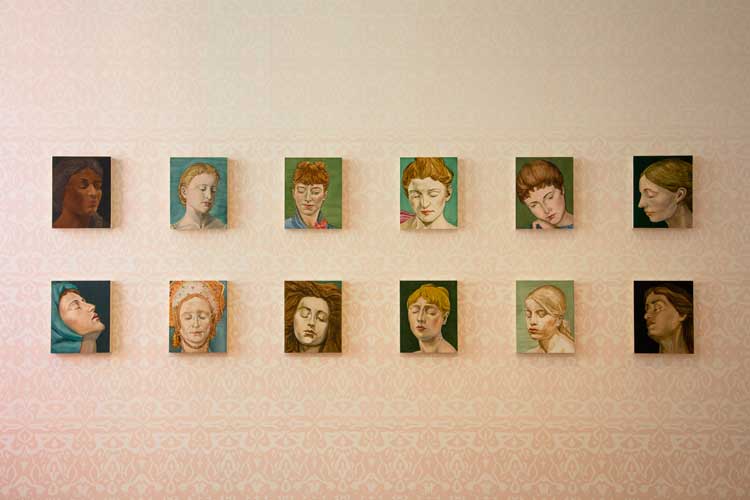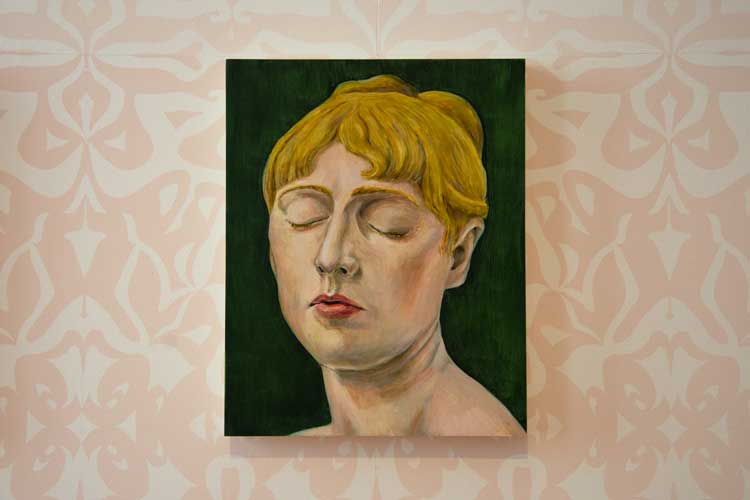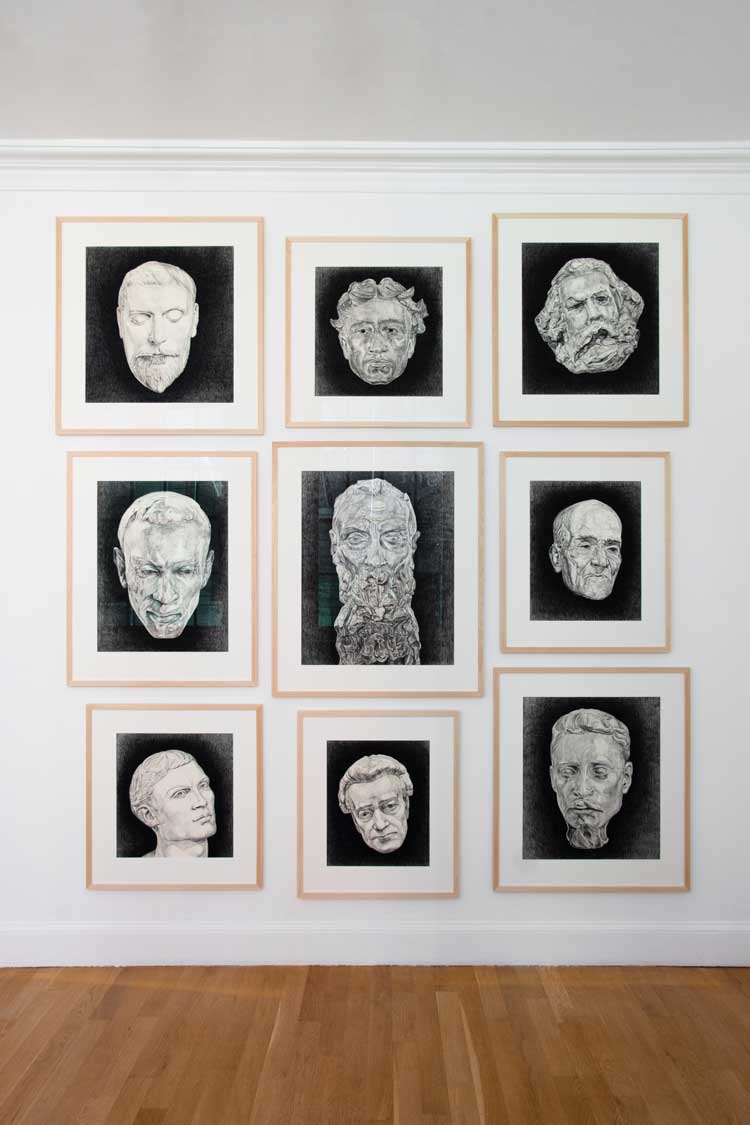The daughter of two sculptors, Rebecca Fortnum (b1963, London), despite the need to define herself as a painter, unsurprisingly has a deep interest in sculpture and the direct encounter this medium demands. Continuing her practice of drawing and painting from sculptures, this one-room exhibition at the Henry Moore Institute in Leeds looks at female sculptors who were associated with Auguste Rodin’s studio in Paris at the turn of the last century.

Rebecca Fortnum: Les Praticiennes, installation view at the Henry Moore Institute, 2023. Courtesy the artist and the Henry Moore Institute.
A research fellowship at the institute in 2021-22 formed the basis of her study, from which she has chosen 15 – and, she says, it could have been many more – names, most of which were unknown to her beforehand. These include Camille Claudel – perhaps the most tragic and well known of Rodin’s encounters; Sarah Bernhardt – known for her acting, but not for her sculpting; and the African American poet, painter, theatre designer and sculptor Meta Vaux Warrick Fuller.

Rebecca Fortnum, Les Praticiennes (Claudel, unknown), 2022. Camille Claudel (1864-1943), France. Young Woman with Closed Eyes c1885, terracotta. Musée Sainte-Croix, Poitiers. Oil on gesso board, 25 x 20 cm. Installation view, Henry Moore Institute, 2023. Courtesy the artist and the Henry Moore Institute.
By choosing to make, not portraits of the women themselves, but paintings of sculpted heads of other women, made by the chosen 15, all using the trope of downcast eyes, Fortnum is not only putting the focus firmly on the status of these women as artists in their own right, but she is creating a multilayered translation. Her finished, two-dimensional, painted image is a translation of a three-dimensional, inanimate translation of a three-dimensional animate being (the original sitter) – and often there is another remove, as many of the sculptures no longer exist or are in private collections, and so Fortnum had to work from two-dimensional archival imagery. She describes her process of “colouring in the blanks” and breathing life into these phantasms, and she talks of her interest in the slippage between these material states and what is lost – and gained – at each stage.

Rebecca Fortnum: Les Praticiennes, installation view at the Henry Moore Institute, 2023. Courtesy the artist and the Henry Moore Institute.
Alongside her small-scale, coloured paintings of these sculptures of women, she has made much larger-scale, black-and-white drawings of sculptures – again by these artists – of men. Made in dense carbon pencil, their presence is strongly felt. These centre – now literally as well as conceptually – around Claudel’s rendering of Rodin.
Rebecca Fortnum: Les Praticiennes
Henry Moore Institute, Leeds
3 February – 4 June 2023
Interview by ANNA McNAY
Filmed by MARTIN KENNEDY